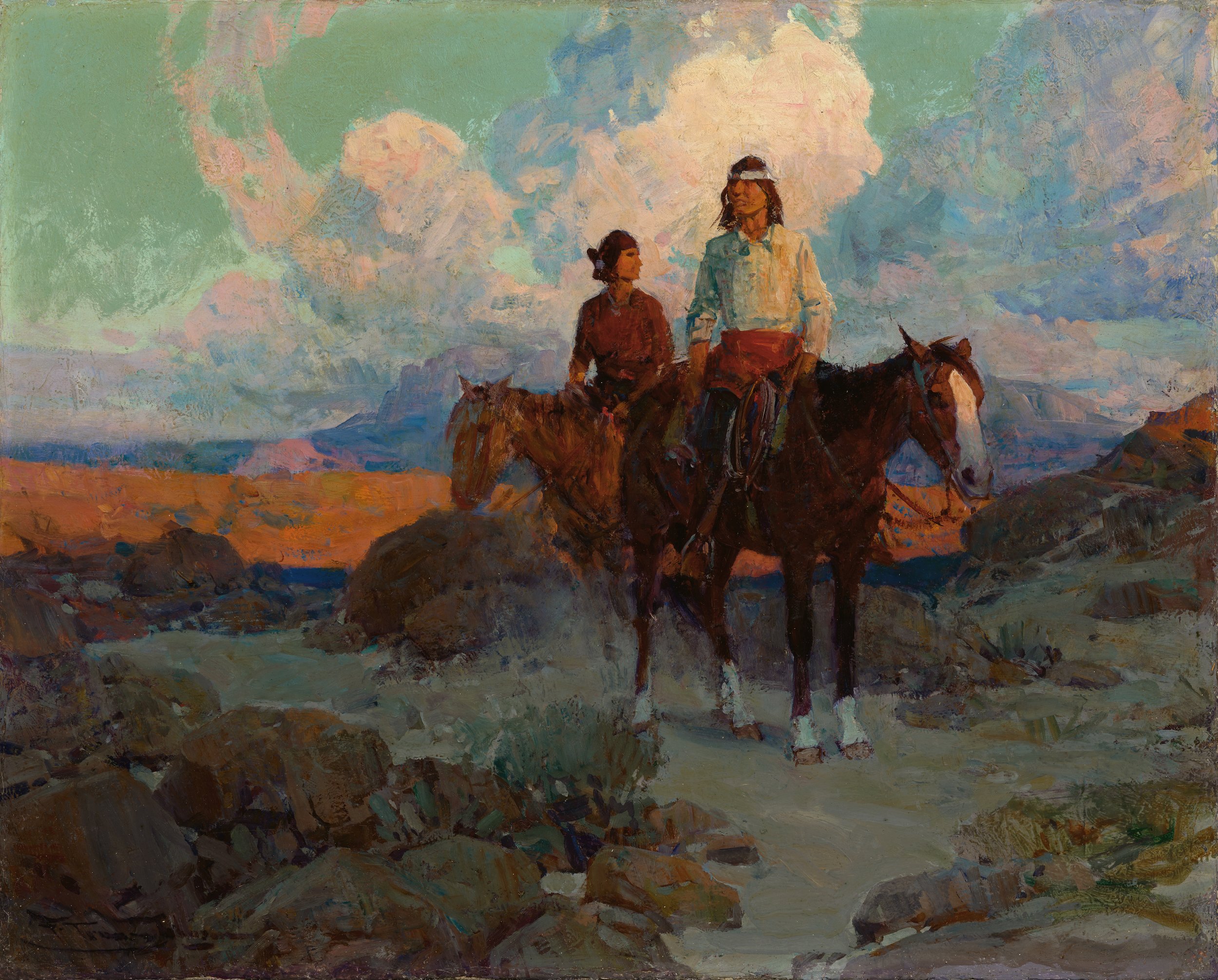FRANK TENNEY JOHNSON
To be contacted when more Frank Tenney Johnson works become available E-mail us HERE
Do you have a Frank Tenney Johnson you would like to sell? Contact us HERE
We are actively buying and selling Frank Tenney Johnson Paintings and drawings. Contact us for details. We can wire money within 24 hours!
Frank Tenney Johnson Biography
Frank Tenney Johnson, born near Big Grove, Iowa, became one of the most renowned painters of the American West in the early 20th century. He grew up on a farm along the historic Overland Trail, where he witnessed the westward migration of pioneers traveling by horseback, stagecoach, and wagon. At age 10, his family moved to Milwaukee, where he began an apprenticeship with F.W. Heine, a panorama artist known for painting horses. This sparked Johnson’s lifelong focus on accurately depicting horses in his art.
He later studied under Richard Lorenz, a member of the Society of Western Painters, who encouraged his interest in Western themes and provided valuable artistic training. In 1895, a modest inheritance allowed Johnson to study for a short time at the Art Students League in New York. Afterward, he returned to Milwaukee, working as a freelance illustrator until he and his wife could afford to move back to New York. There, he studied under noted artists John Twachtman, Robert Henri, and William Merritt Chase.
A pivotal moment in Johnson's career came in 1904, when Field and Stream magazine sent him to the Rocky Mountains and the Southwest. The trip deeply influenced his artistic style and subject matter, especially his fascination with Western skies—both day and night. His moonlit scenes became a signature element of his work, and he studied Maxfield Parrish’s use of color and light to achieve a luminous effect.
Johnson's success with Field and Stream led to frequent trips out West, including a 1912 stop in Winslow, Arizona during a cross-country train journey. In the 1920s, he relocated to Alhambra, California, where he shared a studio with fellow artist Clyde Forsythe. During this period, his easel paintings began to gain more attention than his illustration work. He also painted murals for Los Angeles’ Cathy Circle Theater, using a fast, textured technique with brushes, palette knives, and even his fingers.
Seeking a summer retreat, Johnson built a cabin and studio near Yellowstone Park’s east entrance, along Wyoming’s Shoshone River. From 1931 to 1938, he spent his summers hiking and painting the area's distinctive landscapes.
Widely admired for capturing the spirit of the Old West, Johnson was a tall, striking figure. At an exhibition in New York’s Grand Central Art Galleries, collector Amon Carter purchased all his displayed works. Tragically, not long after, Johnson died of meningitis on January 1, 1939, following a New Year’s Eve dance in Los Angeles.

